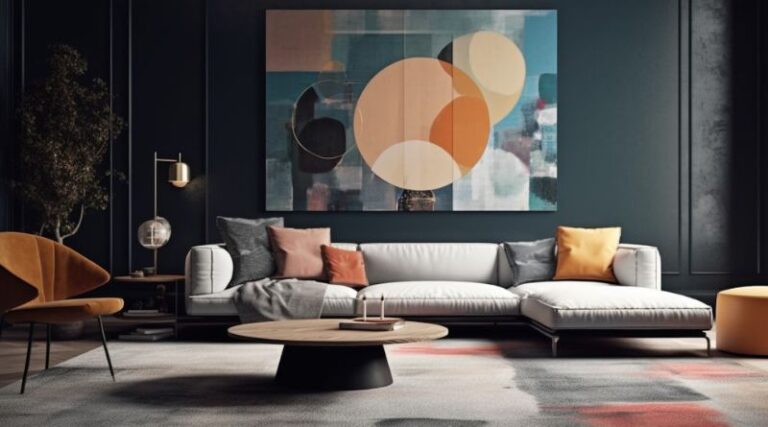Interior design is more than just arranging furniture and choosing color schemes—it’s a creative process that blends art and functionality to enhance our living environments. It’s about crafting spaces that reflect our personalities, meet our needs, and elevate our everyday experiences. In this article, we’ll delve into the art of interior design, exploring how to transform your space with style and grace.
Table of Contents
Understanding Interior Design
At its core, interior design is the art of creating aesthetically pleasing and functional spaces. This involves a keen eye for detail, an understanding of spatial dynamics, and a deep knowledge of design principles. Whether you’re looking to refresh a single room or overhaul an entire home, effective interior design takes into account both the visual and practical aspects of a space.
Key Elements of Interior Design
- Space Planning: This is the foundation of any successful design. It involves arranging furniture and other elements in a way that maximizes the use of space while ensuring comfort and accessibility. Proper space planning prevents overcrowding and ensures that each area of the room is functional.
- Color Theory: Color plays a significant role in setting the mood of a room. Different colors can evoke various emotions and reactions. For example, soft blues and greens create a calming atmosphere, while bold reds and oranges can energize a space. Understanding color theory helps in selecting palettes that enhance the desired ambiance.
- Lighting: Lighting can dramatically affect the look and feel of a room. It’s important to combine ambient, task, and accent lighting to create a balanced and versatile lighting scheme. Natural light should also be considered, as it can make spaces feel more open and welcoming.
- Texture and Patterns: Incorporating different textures and patterns adds depth and interest to a room. This can be achieved through fabrics, wallpapers, rugs, and decorative elements. Mixing textures, like combining soft cushions with a sleek leather sofa, can create a dynamic and inviting space.
- Furniture and Layout: The choice of furniture and its arrangement is crucial for both aesthetic and functional purposes. Select pieces that complement the style of the room and ensure that they are scaled appropriately for the space. The layout should promote ease of movement and align with the room’s intended use.
- Personalization: A well-designed space reflects the personality and preferences of its occupants. Incorporating personal touches, such as artwork, family photos, and unique decor items, makes a room feel like home and adds a layer of authenticity to the design.
Tips for Transforming Your Space
- Start with a Plan: Before diving into design, take time to plan. Create a mood board, list your needs and preferences, and set a budget. A clear plan helps in making informed decisions and staying on track.
- Embrace a Cohesive Theme: Choose a theme or style that resonates with you, whether it’s modern, traditional, rustic, or eclectic. A cohesive theme helps in creating a harmonious and visually appealing space.
- Incorporate Greenery: Plants and greenery can breathe life into a room. They add color, texture, and a touch of nature that enhances the overall aesthetic. Choose low-maintenance plants if you’re not confident in your green thumb.
- Focus on Details: Small details can make a big difference. Pay attention to accessories like throw pillows, rugs, and curtains. These elements can tie the design together and provide a polished look.
- Seek Inspiration: Look for inspiration in design magazines, online platforms, and home decor shows. Understanding current trends and seeing how they’re applied can help you refine your vision.
FAQs
1. How do I choose the right color scheme for my room? Start by considering the mood you want to create and the existing elements in the room. Use color swatches and samples to see how colors look in different lighting conditions. Test them on small areas before committing.
2. What are some budget-friendly ways to update my interior design? Consider DIY projects, such as painting walls, rearranging furniture, or updating old furniture with new fabric or paint. Adding new accessories like cushions, rugs, and artwork can also refresh a space without a major investment.
3. How can I make a small room look larger? Use light colors on walls and furniture to create an illusion of space. Mirrors can reflect light and make the room appear bigger. Opt for multifunctional furniture and keep the space clutter-free.
4. How important is lighting in interior design? Lighting is crucial as it affects the mood and functionality of a space. Layering different types of lighting—ambient, task, and accent—ensures that the room is well-lit and visually appealing.
5. What are some common interior design mistakes to avoid? Avoid overcrowding a room with too much furniture, neglecting the importance of scale, and choosing overly trendy items that may not age well. Ensure there’s a balance between aesthetics and functionality.
Conclusion
The art of interior design is about more than just decorating a space; it’s about creating environments that enrich our lives. By understanding key design principles and incorporating personal touches, you can transform your living spaces into stylish, functional, and truly special places. Whether you’re embarking on a complete overhaul or just making a few tweaks, let your creativity guide you in crafting spaces that reflect who you are and how you want to live.

